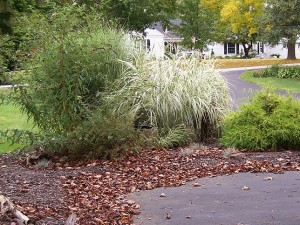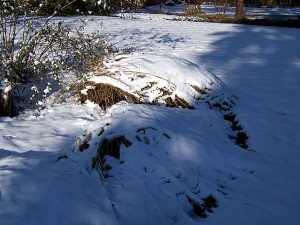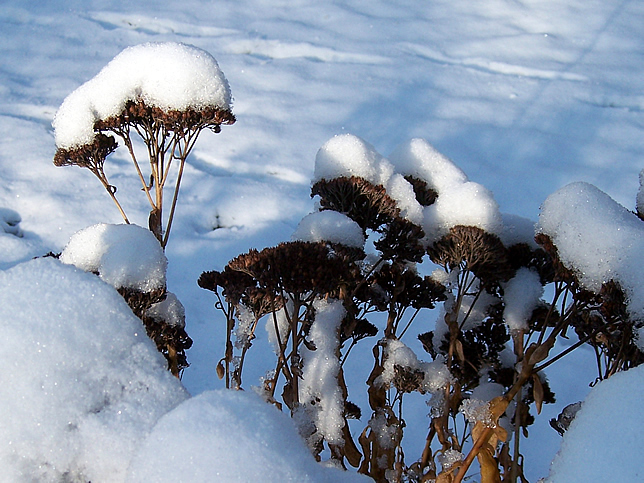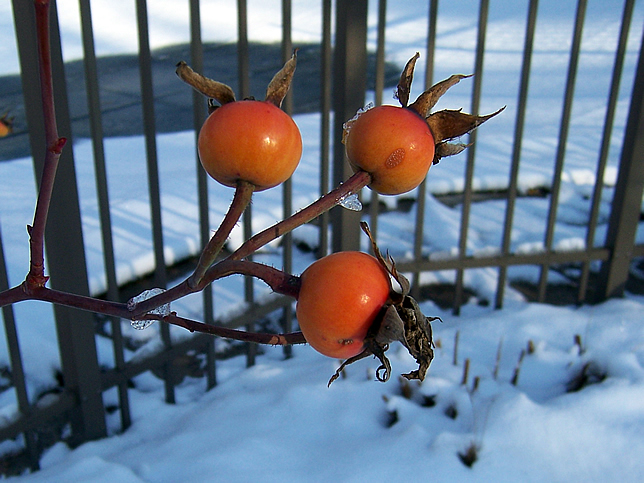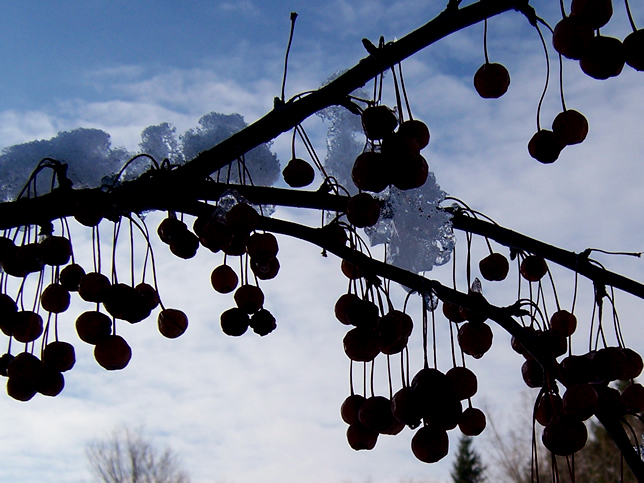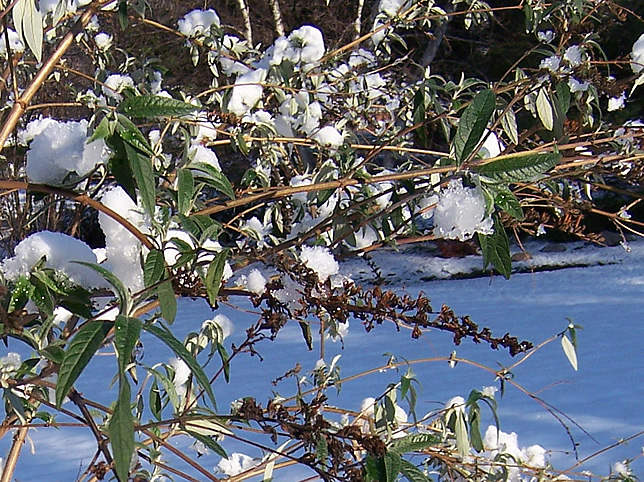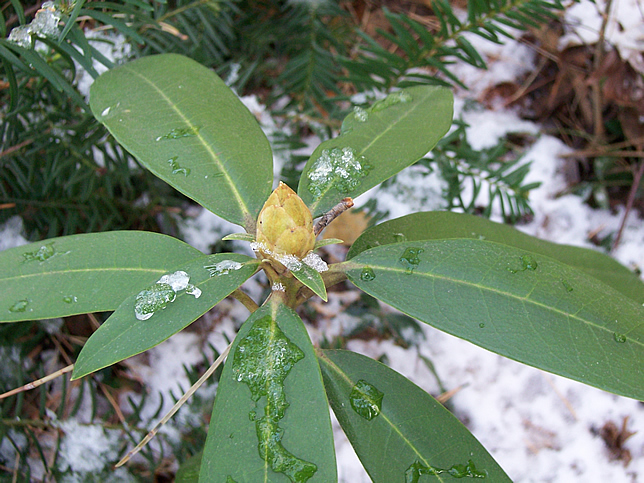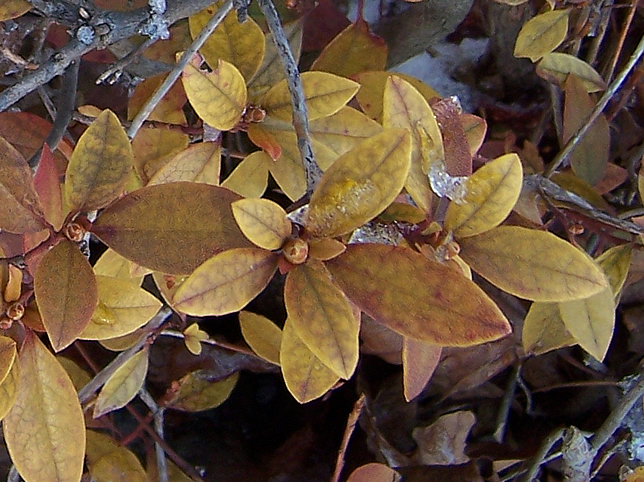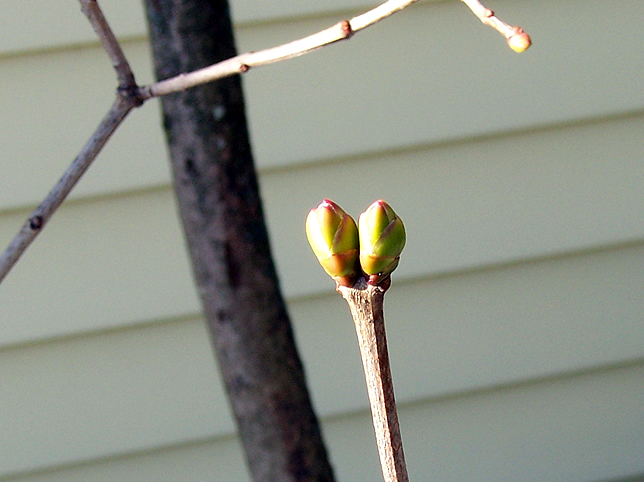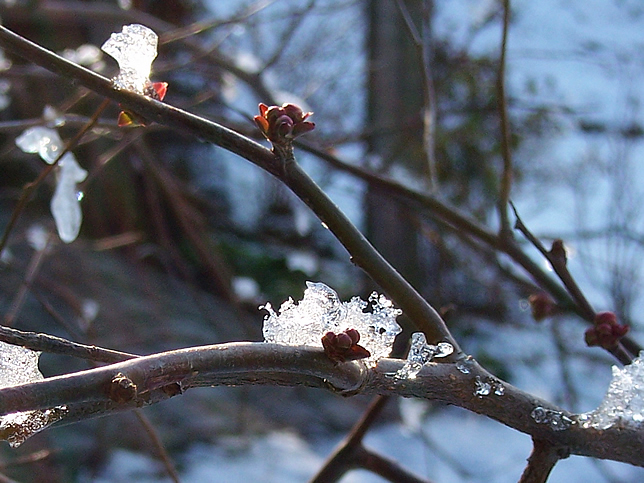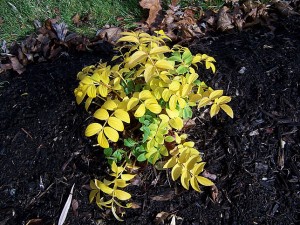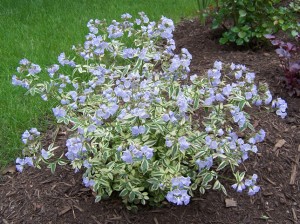I love to use grasses in my plantings – in the gardens combined with perennials, or grouped in a massive planting of grasses, or even in containers. They give a sense of motion, of wind, even when there is none as in these hot, hot days of summer. I haven’t heard the wind chimes for weeks now, but that grass seems to say that the air is moving.
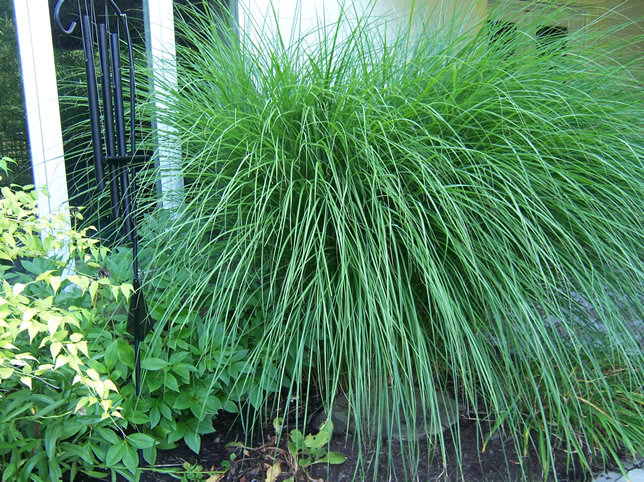
Miscanthus sinensis 'Gracillimus'
I use a variety of different grasses, preferring to use the clump formers or ones that are well-behaved in my zone 5-6 gardens. The striped grass (Miscanthus sinensis ‘Strictus’) below was one of my first acquisitions, and it has been divided and shared many times. It will get to be about 10 feet tall once it blooms and I use it to help screen the pool equipment from the raised deck. There is a grass called Miscanthus sinensis ‘Zebrinus’ or Zebra grass that looks very similar, but it tends to flop and then collapse in the winter. ‘Strictus’ does neither, but also has that distinctive striping.
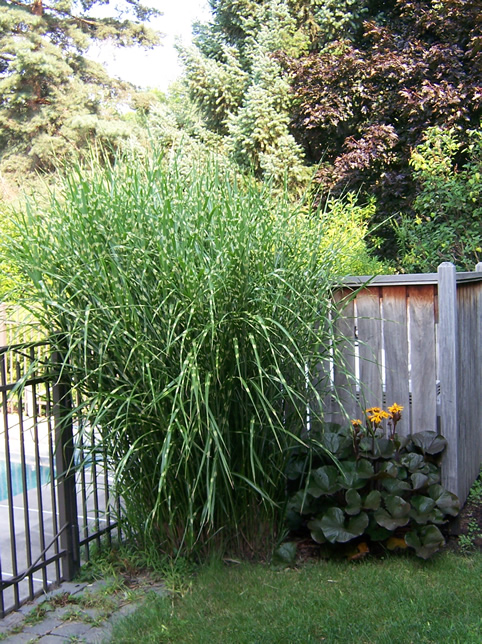
Miscanthus sinensis 'Strictus'
Next up, ‘The Blues.’ Although it doesn’t have a very big presence, I love this grass for all the colors it generates – blues, purples, reds, greens, copper, oranges, and tans – through the year. Schizachyrium scoparium ‘The Blues’ is a native grass and it has a fine, delicate look.
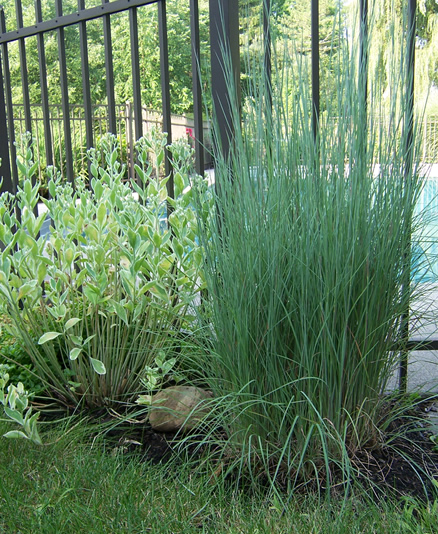
Schizachyrium scoparium 'The Blues'
Hakonechloa macra ‘Aureola’ or variegated Japanese forest grass is combined with the big presence of Miscanthus sinensis var. condensatus ‘Cabaret’ in this vignette. A Pennisetum alopecuroides ‘Little Bunny’ hides in the middle of them. The hakone grass is a slow creeper, but is never invasive. It reminds me of a flowing stream when it is wide and full and I often use it in my designs to symbolize that. The ‘Cabaret’ grass is a bold beauty with cream-striped leaves and can be stunning in the right setting against a dark background. It won’t last through the whole winter though and shatters in the winter winds, a reminder to cut it down in the Fall.
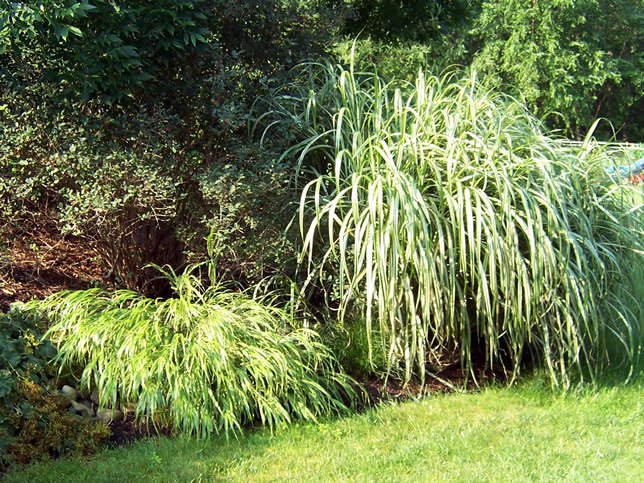
Hakonechloa macra 'Aureola' and Miscanthus sinensis var. condensatus 'Cabaret'
On the other side of the ‘Cabaret’ grass, black-eyed susans combine with Pennisetum alopecuroides ‘Hameln’ and a large boulder for a great, flowing, sense of motion.

Miscanthus sinensis var. condensatus 'Cabaret' and Pennisetum alopecuroides 'Hameln'
This next picture demonstrates why Miscanthus sinensis ‘Morning Light’ is named thusly. Look at how the light just bounces off off the grass blades and makes the plant glow! I placed this grass in a spot than can be viewed from both sides and, I assure you, the scene in the evening with the setting sun behind is equally as beautiful.
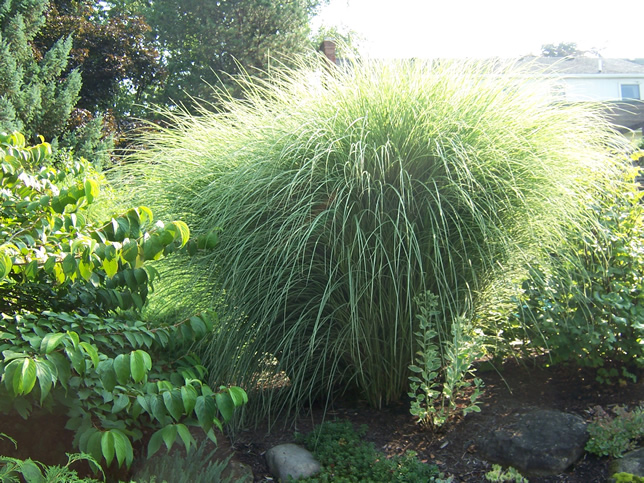
Miscanthus sinensis 'Morning Light'
Besides using grasses in specimen plantings, either solitary or in small groups, you can do big glorious plantings as in the picture below. Just be sure to allow enough room between everything!
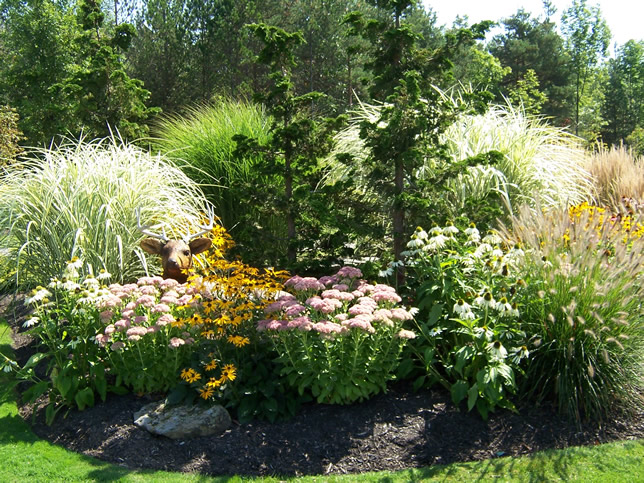
Can you find the carved deer?
Smaller grasses like Pennisetum setaceum ‘Red Riding Hood’, Carex flagellifera ‘Toffee Twist’, Pennisetum alopecuroides ‘Little Bunny’, Hakonechloa macra ‘Aureola’, and even a somewhat larger grass like Pennisetum alopecuroides ‘Hameln’ can be used to wonderful effect in containers.
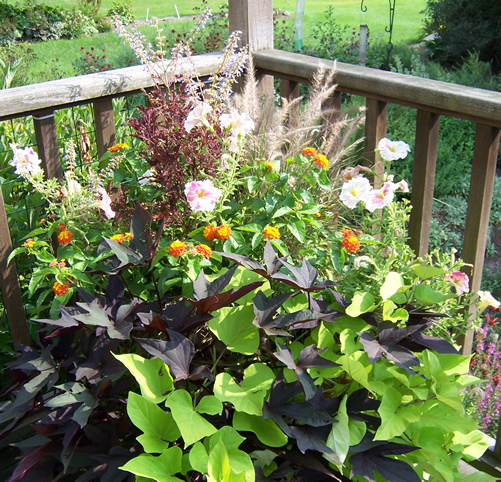
Pennisetum setaceum 'Red Riding Hood'
So, up to this point in the post, we have written about grasses for adding a sense of motion to our plantings. Consider the next two pictures.
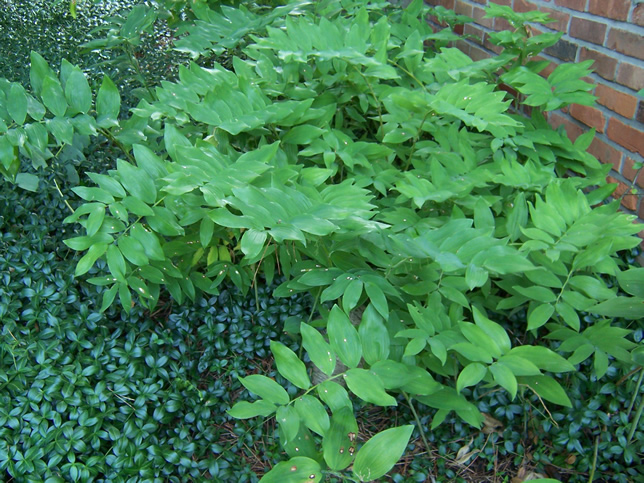
Polygonatum biflorum (Solomon's Seal)

Perovskia atriplicifolia (Russian sage)
Don’t they also give you a sense of motion, of a river or a breeze, and make you feel cooler in the heat?
